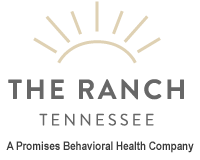According to a new report from the CDC, six Americans age 15 or over die each day from binge-drinking related alcohol poisoning, and this is more common in middle-aged adults than young people. The findings show that the assumptions many of us make about the likelihood of binge drinking are wrong—middle-aged adults actually seem to have a bigger problem with binging than 15 to 24 year olds, who are typically assumed to be the primary bingers. The report also provides information about the differences in alcohol poisoning death rates according to gender, race and home state, as well as the proportion of those who die who are struggling with alcohol addiction.
Binge Drinking and Alcohol Poisoning in the U.S.
Binge drinking is officially defined as drinking to the point where your blood-alcohol content is over 0.08 percent, which is the legal limit for driving across the U.S. The amount required to reach this level differs according to one’s weight and gender, with men ordinarily needing five drinks and women needing four in around two hours to classify as being on a binge. In reality, though, the average number of drinks consumed during a binge episode is eight, leading to even higher blood-alcohol levels. When larger amounts of alcohol are consumed, the risk of alcohol poisoning becomes increasingly significant. Alcohol poisoning deaths result from the impact the drug has on the brain, leading the crucial regions that control heart rate, temperature and breathing to shut down. When this happens, death can often be the result.
Deaths From Alcohol Poisoning in the U.S.
The core finding of the report is that an average of six people age 15 or over died every day from alcohol poisoning between 2010 and 2012. The vast majority of these (76 percent) were men, and non-Hispanic Caucasians accounted for most of the deaths. However, the highest death rate (deaths per million people in the race) was seen in Alaska Natives and American Indians. By state, Alaska had the most deaths per million people and Alabama had the least. For Alaskans, this may be due to living in isolated rural areas, where those in need either might not be found in time or might not be able to get medical treatment quickly enough, according to the researchers. For age, the breakdown shows that 76 percent of all alcohol poisoning deaths are among adults aged between 35 and 64, compared to 18 percent for those 15 to 34. More precise age groupings show that the most deaths occur among 45 to 54 year olds, accounting for 34 percent of all deaths, with 21 percent occurring in 35 to 44 year olds and another 21 percent occurring in 55 to 64 year olds. The next-highest proportion is of people aged 25 to 34 (13 percent), followed by over 65 (6 percent) and 15 to 24 year olds (5 percent). This contradicts assumptions about the impact of binge drinking on youth, since the youngest people in the report actually had the fewest overall deaths. Finally, alcoholism was identified as a factor in 30 percent of the deaths over this period. Other research suggests that most binge drinkers aren’t actually alcoholics, so even though this proportion may seem low (accounting for fewer than one in three deaths), it is actually higher than would be expected from the percentage of people struggling with alcoholism overall.
How Can We Reduce Alcohol Poisoning Deaths?
The CDC suggests a few things everybody can try in order to reduce the number of Americans dying from alcohol poisoning. The first is to avoid binging, instead sticking to low-risk drinking guidelines of no more than three drinks on any day and no more than seven per week for women or no more than four per day and 14 per week for men. It’s also advised to avoid drinks where the alcohol content isn’t known and to avoid mixing alcohol with caffeine, which can prevent you from realizing how inebriated you actually are. Additionally, the CDC suggests learning the signs of alcohol poisoning. These are: vomiting, the inability to wake up, seizures, hypothermia (low temperature, possibly accompanied by bluish skin color and paleness), slow breathing (less than eight breaths per minute) and irregular breathing (10 seconds or more between breaths).
Binge Drinking Is a Problem for Everyone
The report provides sobering statistics, but also addresses several flawed ideas we can easily pick up from media coverage and the general perception of binge drinkers. Most of all, it reminds us that binge drinking, while also common in young people, is a particular issue for older Americans and that most people who binge drink (or die from alcohol poisoning) aren’t actually alcoholics. We need to continue ensuring that young people and alcoholics receive the help they need, of course, but it’s also vital to pay attention to groups we may not consider as much, like middle-aged adults and people we might not see as having a drinking problem. Learning the signs of alcohol poisoning is a potential lifesaver, but identifying people (even those we might not consider at first) who may be in need of further help, before it’s too late, is equally important.

